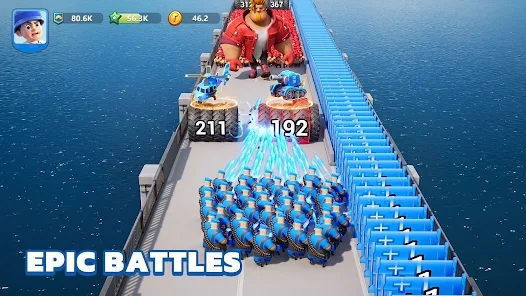Unlocking Learning: The Surprising Benefits of Multiplayer Educational Games
In a world where traditional education systems often struggle to keep students engaged, multiplayer educational games have emerged as a revolutionary strategy in pedagogy. These games not only entertain but serve as innovative tools for learning, engaging students in ways that conventional methods often fail to achieve. In this article, we’ll explore the intricate layers of multiplayer educational games, including insights into their benefits, mechanisms, and specific examples such as the notable EA Sports FC 25 Title Update 7 and its impact on the gaming education landscape.
What are Multiplayer Educational Games?
Multiplayer educational games combine the thrill of competition with learning objectives. Unlike traditional games, these allow multiple players to engage simultaneously, fostering teamwork and social interaction in an educational context. This dynamic not only enhances learning experiences but also builds critical social skills.
The Science Behind Multiplayer Learning
At the intersection of psychology and education, the mechanics of multiplayer games harness principles such as motivation and engagement. This section will discuss how the following elements contribute to effective learning:
- Immediate Feedback: Players receive instant responses to their actions, facilitating rapid learning.
- Balanced Challenge: The games are designed to keep players in the optimal learning zone—challenging enough to engage but not so hard to frustrate.
Key Benefits of Multiplayer Educational Games
Here are the surprising benefits that have stemmed from the adoption of multiplayer educational games:
| Benefit | Description |
|---|---|
| Improved Engagement: | Students remain focused and curious, as the competitive aspect provides motivation. |
| Enhanced Collaboration: | These games promote teamwork, teaching players to communicate and work together effectively. |
| Cognitive Skill Development: | Players enhance critical thinking and problem-solving skills through strategic gameplay. |
The Role of Game Design in Learning
The way a game is designed heavily influences its educational effectiveness. Features such as narrative, rewards, and challenges can transform a mundane learning experience into an exciting adventure. Games like potato video games have comically shown that even the simplest themes can encourage learning outcomes.
Case Study: Potato Video Games in Education
What if we told you that potato video games could support learning in the classroom? These games often incorporate fun themes that engage students. With a blend of humor and simplicity, they appeal especially to younger audiences, making learning less intimidating and more enjoyable.
The Digital Divide and Accessibility
While the benefits are clear, it’s essential to address the digital divide. Not all students have equal access to technology or gaming systems. It’s crucial for educational institutions to consider this when integrating multiplayer educational games into their curriculum.
Barriers to Implementation
Despite the advantages, several barriers exist that may hinder the implementation of these games in educational settings:
- Budget constraints limiting software purchases.
- Lack of training for educators on how to effectively use games in teaching.
- Concerns about screen time and its impact on student health.
How to Choose the Right Multiplayer Educational Game
Educators should consider several factors when choosing multiplayer educational games:
- Alignment with Curriculum: Ensure that the game supports specific learning objectives.
- User Engagement: Evaluate how engaging the game is for students.
- Age Appropriateness: The game should be suitable for the target age group.
Tips for Integrating Games into the Classroom
Here are some actionable tips for educators looking to integrate multiplayer educational games into their teaching:
- Select games that promote collaboration and communication.
- Encourage healthy competition to spark motivation.
- Assess learning outcomes through both game performance and related assignments.
Future Trends in Multiplayer Educational Games
The future of multiplayer educational games is bright, with trends indicating an increase in virtual and augmented reality experiences. Technologies like VR can immerse students in environments that enhance their understanding of complex subjects.
Concluding Thoughts
In conclusion, multiplayer educational games hold the key to unlocking new realms of learning. Their ability to captivate, engage, and educate simultaneously sets them apart from traditional methods.
As educators and institutions begin to grasp their potential, the move toward a blended learning environment incorporating elements of play is not only wise but necessary. While challenges exist, embracing this innovative approach can profoundly impact educational frameworks.
By staying informed and adaptable, we can ensure that the benefits of multiplayer educational games will contribute significantly to the education landscape, transforming the way we learn and interact as individuals.
```


